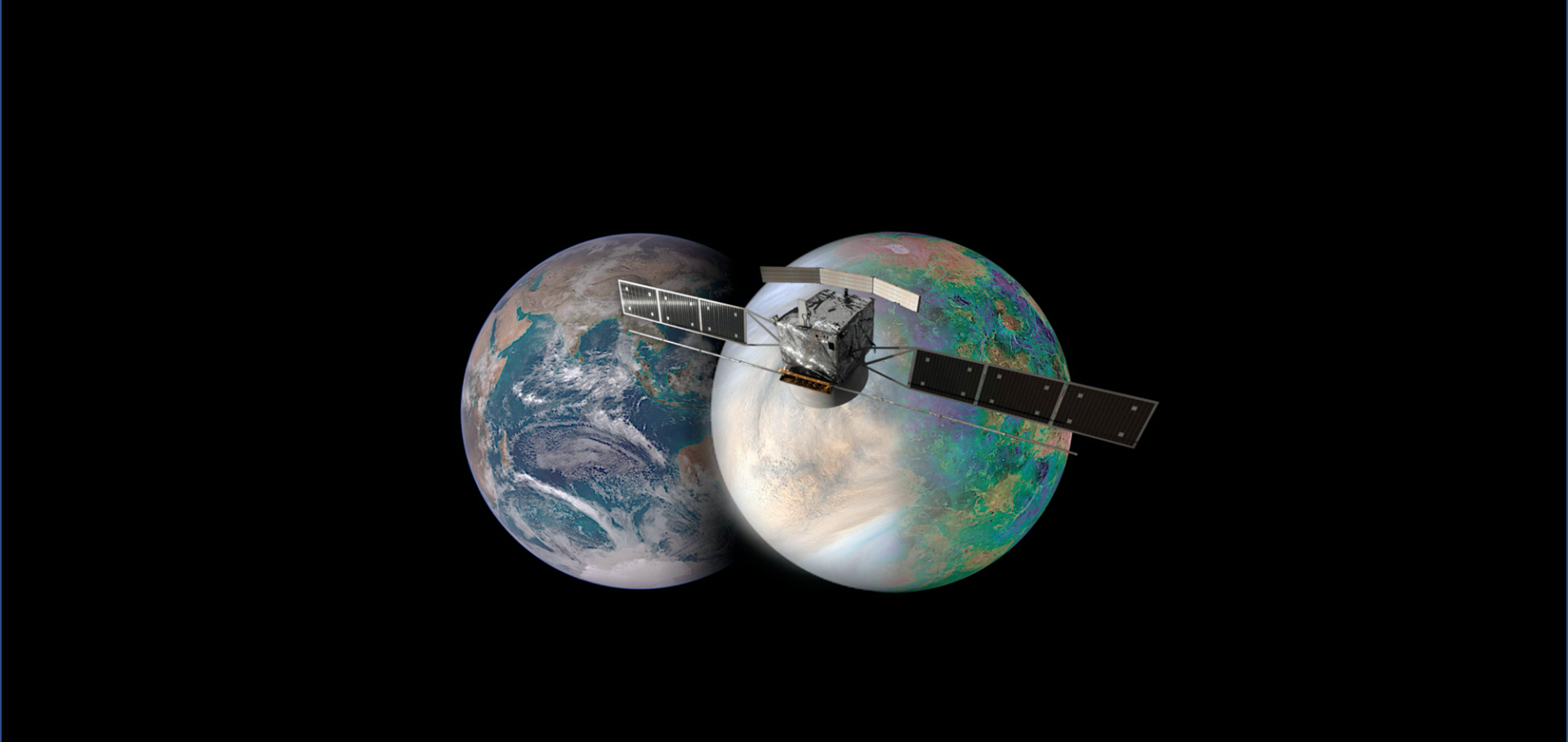Volcanic gas plumes’ effect on the spectrum of Venus
Icarus 438 (2025)
Abstract:
Venus is home to thousands of volcanoes, with a wide range of volumes and sizes. Its surface is relatively young, with a temperature of approximately 735 K and an atmosphere of 92 bar. Past and possible ongoing volcanic outgassing is expected to provide a source to the sustenance of this massive atmosphere, dominated by CO2 and SO2. The lower atmosphere can be investigated in the near-infrared transparency windows on the nightside, such as the 2.3μm thermal emission window, which provides a chance of detection of species with volcanic origin, such as water vapor. The Planetary Spectrum Generator was used to simulate the nightside 2.3μm thermal emission window of Venus. We simulated the effect of a volcanic gas plume rising to a ceiling altitude, for species such as H2O, CO, OCS, HF and SO2. The sensitivity of the radiance spectrum at different wavelengths was explored as an attempt to qualitatively access detection for future measurements of both ground-based and space-instrumentation. We conclude from our qualitative analysis that for the H2O, CO and OCS plumes simulated there is potential to achieve a detection in the future, given a minimum required signal-to-noise ratio of 50. For SO2 and HF plumes, a higher signal-to-noise ratio would be needed.Comparative study of the retrievals from Venera 11, 13, and 14 spectrophotometric data.
(2025)
Abstract:
Ionospheric Analysis With Martian Mutual Radio Occultation
Journal of Geophysical Research Planets 130:6 (2025)
Abstract:
This study presents a comprehensive analysis of the Martian ionosphere using Mutual Radio Occultation (RO) observations between Mars Express and Trace Gas Orbiter, featuring 71 full vertical profiles out of a total of 124 measurements. Among these, 35 measurements were taken from regions with Solar Zenith Angles lower than 40°. The profiles also represent the largest data set for the lower M1 ionospheric layer during the midday ever measured. This paper has also been submitted with a comprehensive data set, which marks the first time MEX-TGO RO data has been made available to the community. Additionally, neutral temperature profiles have been extracted from the measurements. We find unexpected features in the lower thermosphere temperature behavior which we conclude is likely due to the effects of local circulation and associated dynamical heating rather than solar-controlled.Mars Express: From the Launch Pad to a 20-Year Success Record at Mars
Space Science Reviews 221:4 (2025)
Abstract:
Mars Express was conceived and built by ESA as a successor of the unsuccessful Russian Mars-96 mission. It was planned from the onset as an orbiter and lander mission to be able to carry out long-term, remote sensing and in-situ scientific investigations of the planet Mars and its environment. As an exceptionally successful workhorse and a backbone of the Agency’s Science Programme in operation at Mars since end December 2003, Mars Express has proven to be a highly productive mission returning excellent scientific value for the investments made by ESA and its Member States. This paper is intended as the introduction to the series of papers that make this special collection. It briefly reviews the history of the mission, its science goals, its uniqueness while establishing its complementarity with other Mars missions in a collaborative context. It also lists the teams and operational aspects and innovations that made this mission a success. Then the paper highlights Mars Express’s scientific achievements throughout its 20-year lifetime. Mars Express results and discoveries continue playing an essential role in understanding the geological, atmospheric and climate evolution of the Red Planet and determining its potential past habitability. To conclude, a preview of the science and other topics covered by this collection is given. Mars Express, a pioneering mission for Europe at Mars, is currently continuing on its long scientific journey around the Red Planet.Context images for Venus Express radio occultation measurements: A search for a correlation between temperature structure and UV contrasts in the clouds of Venus
Astronomy & Astrophysics EDP Sciences 698 (2025) a198


